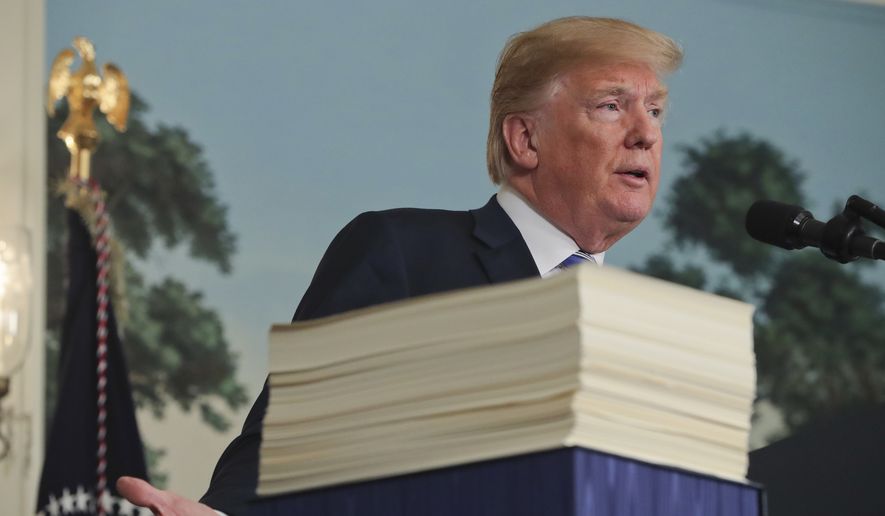The government is now staring at $100 trillion in total debt, the Congressional Budget Office said Tuesday, chronicling the disastrous trajectory of federal fiscal health.
The eye-popping figure, part of the CBO’s latest long-term budget projections that look out over the 30-year window, foresee plenty of grim news.
Spending will surge, while taxes will only tick up slightly, producing deep annual deficits that will amass into a potentially catastrophic debt burden.
CBO analysts said debt held by the public, which is 78 percent of gross domestic product today, will reach 152 percent in 2048. And given that GDP will be $65 trillion that year, it means a debt total of $98.8 trillion.
CBO also projected that Social Security will become insolvent early in the 2030s.
“Lawmakers need to come to the table and address this situation before it gets further out of hand,” said the Committee for a Responsible Federal Budget.
The government’s finances have been slipping for about a decade, dating back to the massive infusion of spending and tax cuts designed to counter the 2008 Wall Street collapse.
A brief respite when Republicans took over control of the House in 2011 has dissipated, and the GOP-led Congress over the last six months has approved deep tax cuts and major discretionary spending increases.
“Today’s report is another reminder about the true costs of handing out massive tax breaks to billionaires and large corporations,” said Senate Minority Leader Charles E. Schumer, New York Democrat.
Republicans countered that taxes, while historically low now, will be above average by the end of the three-decade window. They said that means the problem isn’t a lack of government money, but too much government payouts.
“One thing has been clear for years: Washington does not have a revenue problem; it has a spending problem,” said Rep. Kevin Brady, Texas Republican and chairman of the House Ways and Means Committee.
The CBO didn’t take sides, but did highlight the large projected growth in spending on entitlement programs such as Social Security and Medicare as major drivers of debt.
The government will pay out a staggering $4 trillion a year in Social Security payments and nearly $4.5 trillion in Medicare benefits in 2048, the CBO said. That would account for about half of the deficit that year.
Interest on the debt will also eat up the budget, rising from about $300 billion this year, or less than 2 percent of GDP, to $4 trillion, or 6.3 percent, in three decades.
All told, government spending will consume up nearly one-third of GDP in 2018 — approaching the level of some European governments.
Tax revenue, meanwhile, is projected to rise slowly — and will still be below 20 percent of GDP in 2048.
The numbers could be even worse.
The CBO used current law to make its calculations, anticipating the GOP tax cuts expire within a decade.
Should Congress choose to extend the tax cuts and to continue heightened spending envisioned in the latest spending law, the situation gets even more bleak.
The Committee for a Responsible Federal Budget says debt could reach about 200 percent of GDP — or about $130 trillion — in 2048.
As it is, debt at 152 percent — the CBO’s projection — would be the highest in U.S. history, “by far” surpassing even the worst years of World War II, the government analysts said.
“We knew already that federal debt was heading towards unsustainable levels,” said Shai Akabas, director of economic policy at the Bipartisan Policy Center, “but the new projections give us a picture of just how bad the problem will be in 30 years, when our children and grandchildren will have to foot the bill.”
• Stephen Dinan can be reached at sdinan@washingtontimes.com.




Please read our comment policy before commenting.